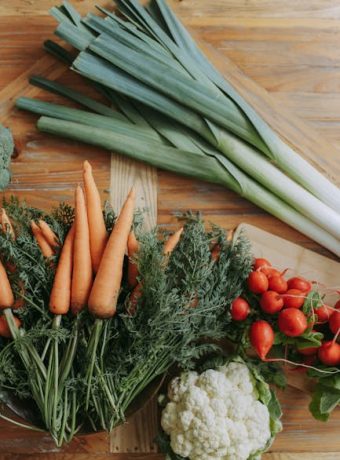Healthy Food in Thai Cuisine: Light and Tasty Curries
When you think of Thai cuisine, your mind probably drifts to the tantalizing aroma of spicy curries. But did you know that these delightful dishes can be both light and healthy while packing a flavorful punch? Let’s explore how to savor the best of Thai curries without compromising on health. 🌿🥥
Table of Contents
1. Introduction to Thai Curries
2. The Health Benefits of Thai Ingredients
3. Types of Light Thai Curries
4. Tips for Making Healthy Thai Curries at Home
5. Conclusion
6. FAQ
Introduction to Thai Curries
Thai curries are a harmonious blend of aromatic herbs, spices, and fresh ingredients, creating a symphony of flavors that is hard to resist. Traditionally, these dishes combine coconut milk, curry paste, and a variety of meats or vegetables. While they might seem indulgent, with a few tweaks, they can become a healthy meal option suitable for any diet. 🌶️🥦
The Health Benefits of Thai Ingredients
One of the secrets to making Thai curries both delicious and healthy lies in their ingredients:
1. Lemongrass: Known for its detoxifying properties.
2. Ginger and Galangal: Both boost digestion and have anti-inflammatory effects.
3. Turmeric: A powerful antioxidant and anti-inflammatory spice.
4. Coconut Milk: Provides healthy fats, but it’s important to use in moderation for a lighter dish.
Types of Light Thai Curries
Not all curries are created equal; some are naturally lighter and healthier:
1. Green Curry: Typically made with green chilies, this curry is fresh and vibrant. Opt for more vegetables and less coconut milk for a lighter version.
2. Red Curry: Made with red chilies, it’s rich but can be balanced with more veggies and lean proteins like chicken or tofu.
3. Yellow Curry: Known for its milder flavor, this curry often incorporates turmeric and is great with vegetables and seafood.
Tips for Making Healthy Thai Curries at Home
Cooking Thai curries at home allows you to control the ingredients and tailor them to your dietary needs. Here are some tips:
🍚 Use brown rice instead of white for added fiber.
🥥 Choose light coconut milk or coconut cream to reduce calorie content.
🌿 Increase the amount of vegetables to add more nutrients and texture.
🍋 Balance flavors with lime juice and herbs like cilantro for added freshness.
Conclusion
Thai curries don’t have to be a guilty pleasure. By understanding the benefits of their traditional ingredients and making small adjustments, you can enjoy these delicious dishes with all the flavor and none of the guilt. So next time you’re craving Thai, remember that a healthy, tasty curry is just a few ingredients away. 🍛❤️
FAQ
Q1: Can I make Thai curry without coconut milk?
Absolutely! You can substitute with almond milk or broth for a lighter version.
Q2: Are Thai curries usually very spicy?
It depends on the curry. Green curry tends to be spicier, but you can always adjust the heat to your liking.
Q3: How do I thicken my Thai curry?
You can use cornstarch or simply let it simmer longer to reduce the liquid.
Q4: What protein options work best in Thai curries?
Chicken, shrimp, tofu, and chickpeas are all great options for a healthy protein boost.
Q5: Can I freeze homemade Thai curry?
Yes, Thai curry can be frozen for up to three months. Just ensure it’s stored in an airtight container.



